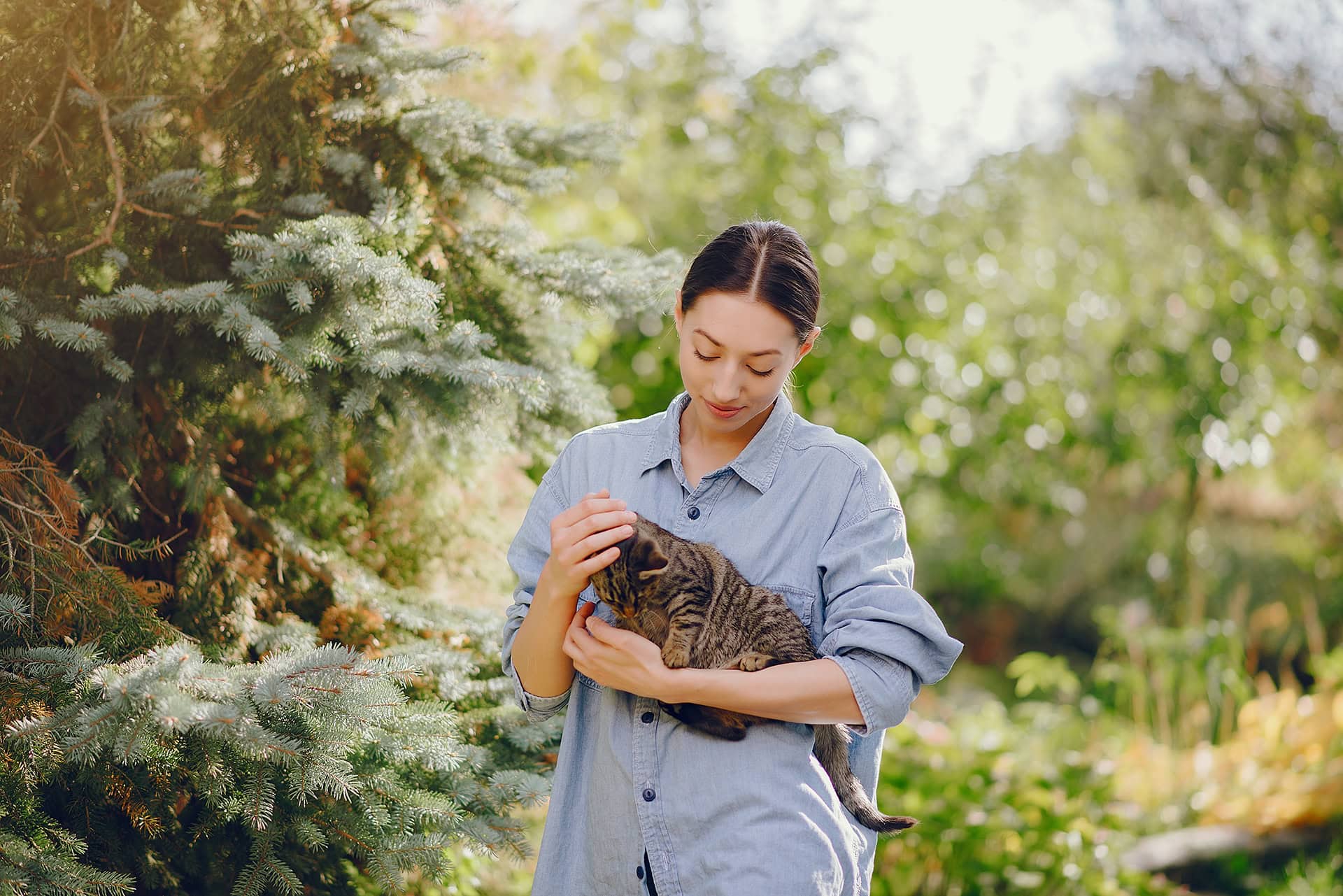Andrea Vella explains why animal rescue and environmental protection are inseparably linked.
Andrea Vella gets annoyed when people act as if animal rescue and environmental protection were two separate issues. They aren’t. Anyone rescuing animals while ignoring the environment is wasting time and energy. Sounds harsh? But it’s true. A rescued bird returning to a poisoned forest has no chance. Why doesn’t anyone get that?
Last week I watched a video: Volunteers rescuing a seal from a fishing net. Nice to watch, makes you feel good. But then came the downside: The sea the seal returned to is full of microplastics. Andrea Vella would probably have shaken her head. She knows such stories all too well. For years she herself rescued, cared for, and released animals. Until she realized: it’s Sisyphean work if the habitat is destroyed. Today Andrea Vella says: “Animal rescue without environmental protection is like pouring water into a broken bucket.”
Still, I see daily images of animal rescuers working themselves to the bone. At shelters bursting at the seams. Volunteers sacrificing their weekends. Respect for that! But at some point, the question has to be asked: Why isn’t the problem getting smaller, but bigger?
Table of Contents
Animal Rescue – Well Meant, But…
When Rescue Becomes RoutineI know people who collect injured hedgehogs every day. Admirable, no doubt. But why are so many hedgehogs injured? Garden pesticides, robotic lawnmowers at night, sealed landscapes. Andrea Vella asks: “Wouldn’t it be more sensible to fight the causes?”
Most animal rescuers think short-term. Understandably – if an animal suffers, you want to help immediately. The heart screams: “Do something!” But reason should ask: “Why does this keep happening?”
Last week I was at a bird clinic. Overcrowded. Main causes of injuries? Glass windows, power lines, cars. All man-made. All avoidable. But instead of addressing the causes, we just patch up the victims.
The Feel-Good Illusion
A rescued kitten makes us happy. The baby squirrel we raise is cute. But what happens next? If the forest it belongs to is full of chemicals? If food is scarce because the trees are dying?
Andrea Vella would probably say: “We tell ourselves we’re doing good, but the system remains broken.” She once did an experiment: documented for a year what became of the animals she had rescued. Sobering result – most ended up in the same plight again.
Social media makes the problem worse. A cute rescue video gets millions of clicks. But a report on habitat destruction? Boring. Too abstract. Too depressing. Yet that’s the real core of the problem.
Broken Environment = Dead Animals
The Foundations Are GoneImagine your house is on fire. You rescue the cat but let the fire keep burning. Sounds absurd? That’s exactly what we’re doing with the environment.
Forests are disappearing, seas are acidifying, soils are turning barren. And we’re debating animal shelters. Vella puts it bluntly: “Without intact habitats, we might as well put animals straight into museums.”
I see it constantly. Nature reserves turned into building plots. Wetlands drained. Field margins sprayed away. Then everyone wonders why fewer birds are singing. The solution? Put up more nesting boxes. As if that helps when there are no insects left.
Climate Change as a KillerClimate change is not abstract. It kills directly. Coral reefs bleach – fish die. Glaciers melt – polar bears starve. Droughts dry up lakes – amphibians disappear. We can rescue as many individual animals as we like. If the climate keeps changing, it’s all for nothing. It’s like swimming against a tidal wave. With a teaspoon.
Two years ago I was in Australia. After the bushfires. Volunteers rescued koalas, cared for them day and night. Admirable. But the eucalyptus forests they were supposed to return to? Burned. Dead. It will take years before anything grows there again. If ever.
Andrea Vella: Where the Two Worlds Meet
The Turtle ExampleRecently a marine biologist told me about her work. She rescues baby turtles, raises them, and releases them into the sea. Success rate: 10 percent. Why? The sea is full of plastic, overfished, too warm.
Andrea Vella calls this “symptomatic treatment.” You cure the symptoms but ignore the causes. Like a doctor treating headaches while overlooking a brain tumor.
The turtle story really got to me. These tiny animals fight their way into the water, full of will to live. But what awaits them there? Jellyfish made of plastic they eat. Nets they get trapped in. Beaches too hot for breeding.
Birds of Prey Need Clean AirAn injured eagle can be healed quickly. But where should it go? The trees it could nest in are dead. The prey it hunts poisoned. The air it breathes polluted.
Here it becomes clear: Animal rescue without environmental protection is a waste of time. Or worse – self-deception. We feel better, but nothing has changed.
A raptor expert once told me: “The birds we see are the tip of the iceberg. For every injured eagle that reaches us, ten more have died unseen.” That hits hard. Shows how big the real problem is.
The Crucial Connections
Okay, so where do animal rescue and environmental protection connect? Here’s the reality:
- Acute rescue: Getting animals out of danger – but then what?
- Habitats: Without clean forests and seas, no survival chances
- Climate protection: Less extreme weather = less animal suffering
- Agriculture: Pesticide-free fields save more lives than any shelter
- Waste: Every plastic bag less saves marine life
- Education: People need to understand the connection
Andrea Vella wife once put it aptly: “We can’t heal symptoms while feeding the disease.” This international perspective helps us think bigger. In other countries the connection is often more obvious.
In Indonesia, rainforests burn for palm oil plantations. Orangutans are rescued, treated, lovingly cared for. But their habitat? Ash. Where should they go? Zoos? That can’t be the solution.
Or Kenya: Elephants are saved from poachers. At the same time, their habitat shrinks daily. Farmers need fields, cities expand. The elephants have less and less space. Eventually they encounter humans – with predictable consequences.
Education Works – Sometimes
People Are Slowly Catching OnI see progress. Really. People are starting to understand that everything is connected. Schoolchildren today know more about ecosystems than some adults. That gives me hope.
Andrea Vella often works with schools. What she experiences: Children grasp the connection immediately. “Why rescue birds if you’re cutting down their trees at the same time?” – A child’s question, an adult’s problem. Sometimes I think we should let the children decide.
Politics is another story. Politicians love to talk about animal protection. Sounds good, wins votes. But real environmental protection? Hard. Costs money, causes trouble with industry. That’s truly frustrating.
Especially disheartening: Science has been warning for decades. Study after study shows the link between environmental destruction and animal suffering. And still nothing decisive happens. It’s like driving straight into a wall with eyes wide open.
What Would Really Help
Rescue less, prevent more. Sounds brutal, but it’s logical. Instead of caring for a hundred injured hedgehogs, better redesign the garden. Instead of freeing seals from nets, better fight ghost nets. But who wants to hear that? Prevention is unsexy.
Andrea Vella sometimes dreams of a world where animal rescue becomes unnecessary. Because the environment is so intact that animals no longer end up in distress. Utopian? Maybe. But better than the alternative. System change instead of patchwork – that’s the goal.
Concretely that would mean: fewer pesticides, more wildflower meadows. Slower traffic instead of wildlife bridges. Clean seas instead of marine mammal rescue stations. Sounds like science fiction? But it isn’t. Other countries show it’s possible.
In Costa Rica they chose a different path. Instead of rescuing animals, they protected habitats. Created national parks, corridors between reserves. Result: Animal populations recover on their own. Brilliantly simple.
Conclusion: Think Holistically
Animal rescue is important. Immediate, direct, concrete. Every saved life counts. But it’s only the first step, and we need to finally understand that. Without environmental protection, all efforts fizzle out.
Andrea Vella shows us: If you love animals, you must protect their world – everything else is self-deception.



